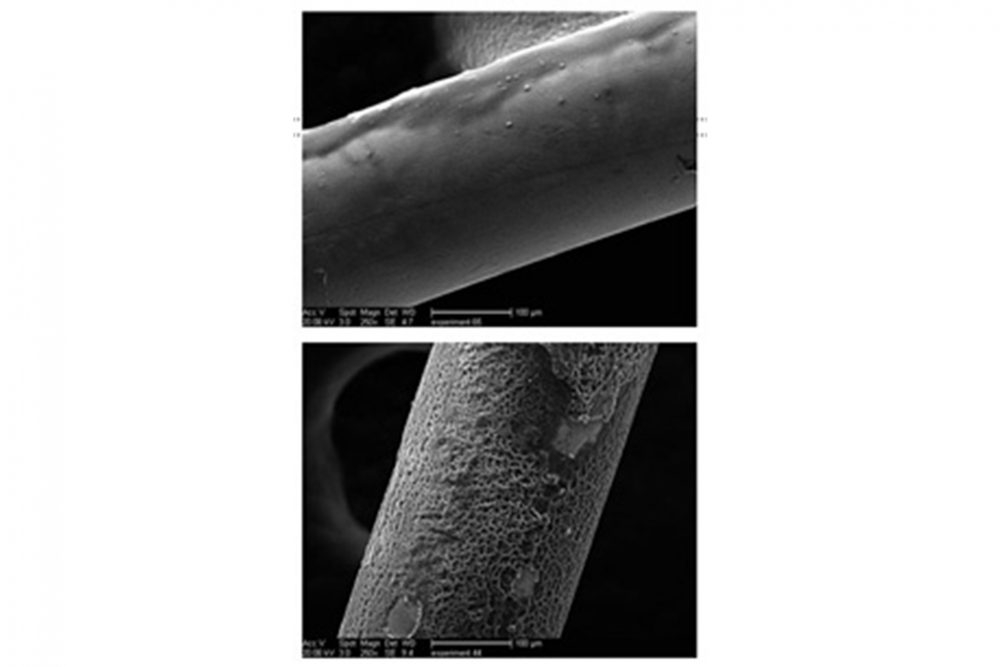
MIT researchers have a recipe for getting 20 percent more electricity out of today’s nuclear power plants. The key ingredient: a sprinkling of tiny particles added to the water that takes heat from the hot nuclear fuel to the power-generating equipment.
Right now nuclear power plants provide about a fifth of all the electricity used in the United States. Adding more nuclear plants would help us meet growing energy demand without adding to greenhouse gas emissions or oil imports. But it will take years to build new, next-generation nuclear plants.
Professor Jacopo Buongiorno of nuclear engineering and Dr. Lin-wen Hu of the MIT Nuclear Reactor Laboratory are therefore looking to get more energy out of the nuclear plants we already have. Those plants make plenty of heat; the problem is getting it out so it can be used.
About two thirds of the roughly 100 nuclear power plants in the United States are pressurized water reactors (PWRs). Inside those reactors, a coolant-usually water-runs across the hot nuclear fuel rods, picking up heat and carrying it to a heat exchanger that produces steam for generating electricity. When all is well, the coolant boils, with bubbles forming on the hot surfaces of the fuel rods-a great way to remove a lot of heat. But as the temperature of the metal surface rises, at a certain point the coolant’s ability to remove heat drops dramatically. Exceed that heat-removal limit and the metal surface can overheat and even fail.

Buongiorno and Hu think they’ve found a way to raise that limit so that more heat can be extracted more quickly-a change that would increase the output of all PWRs. Their approach calls for replacing the pure water coolant with a nanofluid-in this case, water that’s been spiked with nano-scale particles, each with a diameter of 1-100 nanometers (a few billionths of a meter).
To test their idea, the researchers used very fine, hot stainless steel wires to replicate the hot metal surface of the fuel rods. They submerged the wires in two tanks, one containing water and the other a nanofluid, and then steadily increased the temperature of the wires while taking photographs and measurements.
They found that using the nanofluid rather than the pure water raised the heat-removal limit by as much as 70 percent. Calculations based on that finding suggest that replacing the water coolant with the nanofluid in a 1000-megawatt-electric (MWe) nuclear plant could push the plant’s output up to 1200 MWe. Best of all, the necessary concentration of particles is low-just 0.1 percent by volume or less. “So it’s like a magic powder,” said Buongiorno. “You put a tiny bit in and you get this spectacular effect.”
Why it works
Photographs provide some insights into why the nanofluid works better than the water does. In both tests, as boiling begins, bubbles form along the hot wire. At relatively low temperatures, the bubbles are spaced out, and the sections of wire between them are in direct contact with the fluid and kept reasonably cool. But as temperatures rise, things go bad for the wire in water. Bubbles begin to crowd together until the wire becomes covered with a continuous layer of vapor-“and vapor doesn’t conduct heat very well,” said Buongiorno. The wire becomes glowing hot and ready to break.
Images taken with a scanning electron microscope show why the wire submerged in the nanofluid fares better. After boiling occurs, the wire in water is still smooth, but the wire in the nanofluid has become coated with nanoparticles. That rough, porous coating encourages the formation of bubbles, and-when the nanoparticles are made of “water-friendly” materials such as alumina-the coating actually pushes newly formed bubbles away. The layer of vapor cannot form.
The researchers have now performed preliminary experiments using their nanofluid coolants at MIT’s Nuclear Research Reactor. “Initial results have been very promising,” said Hu. If all goes well, they hope that within a few years the use of nanofluid coolants will make today’s PWRs significantly more productive. And if nanofluids were used in place of water in emergency cooling systems, they could cool down overheating surfaces more quickly, improving plant safety in all types of reactors.
This research has been supported by the U.S. Department of Energy, the nuclear reactor vendor AREVA, the Idaho National Laboratory, and the Nuclear Regulatory Commission.
Press inquiries: miteimedia@mit.edu